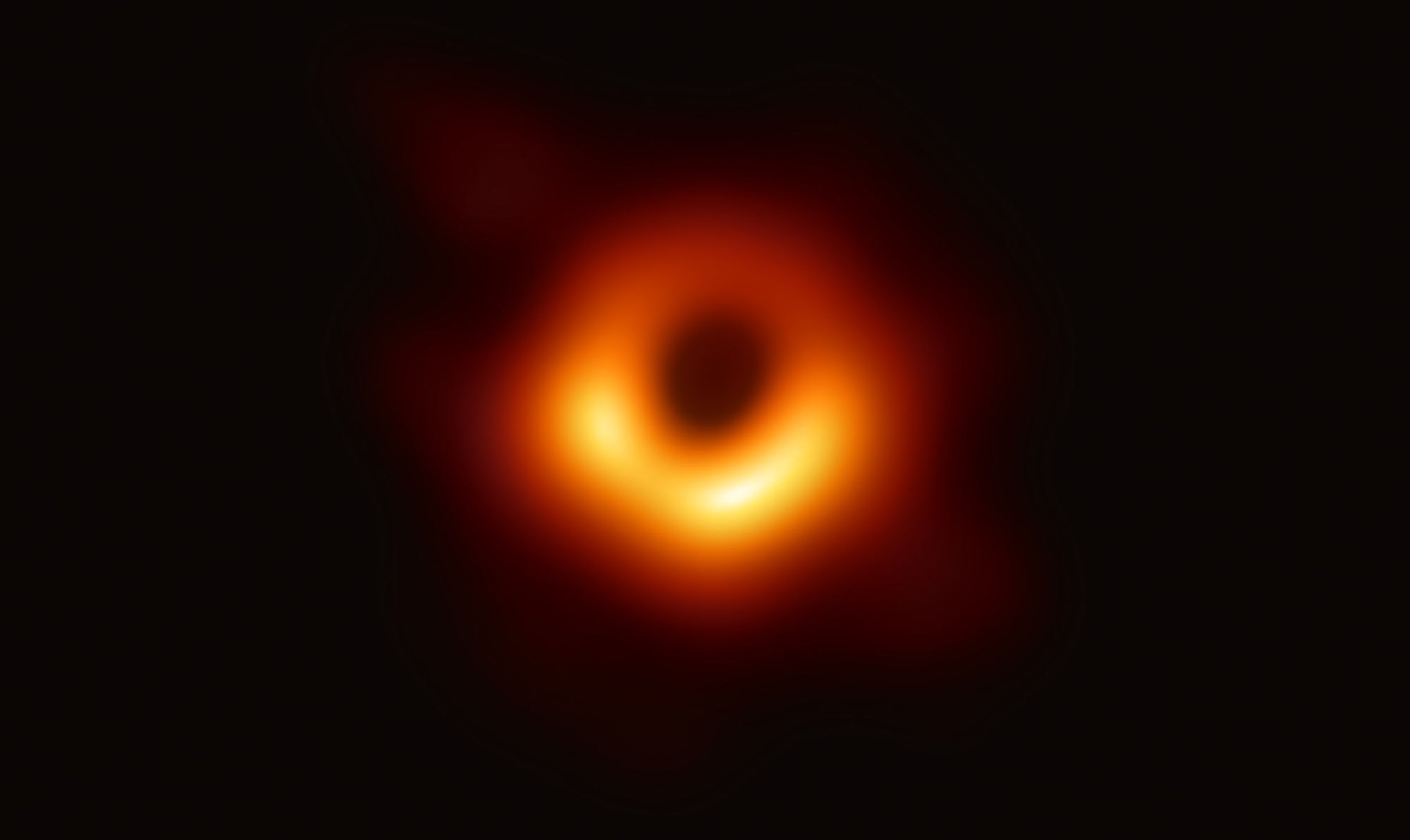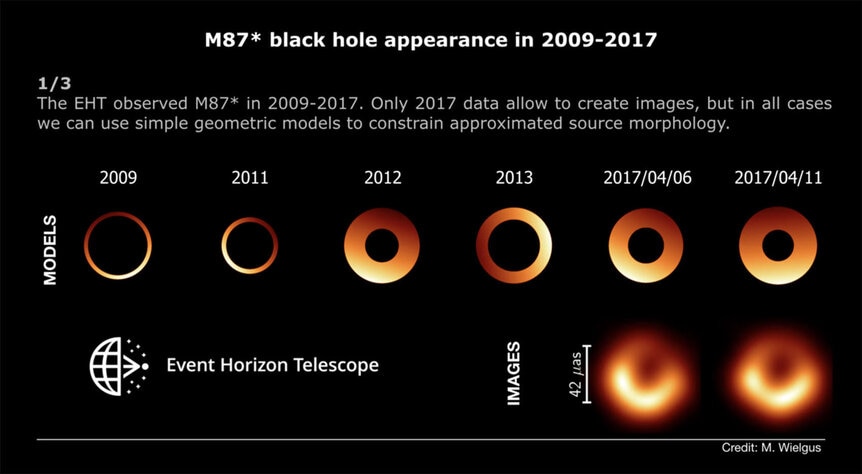Create a free profile to get unlimited access to exclusive videos, sweepstakes, and more!
The ring of material around M87’s supermassive black hole is changing with time

Last year, astronomers revealed a stunning image showing a ring of matter swirling around a supermassive black hole, and a dark hole in the ring representing the black hole’s “shadow.”
That iconic image of the black hole represents a week of observations taken in 2017 by the Event Horizon Telescope (EHT), an array of eight telescopes spread across the world, linked together to increase their resolving power.
However, that array was put together over many years, and during that period the black hole was observed by the not-quite-complete EHT many times. While the data weren’t sufficient to create images, they could be analyzed to look at the material around the black hole to look for anything that might change over that time.
A team of astronomers tackled this hefty project, and found two important things: The size of the ring and the “shadow” didn’t change, but the brightness of the ring did. Not only that, where it was brightest changed, too, and it’s not clear why.
First things first. The black hole, generally called M87* (literally said out loud as “M 87 star”) is in the center of the giant elliptical galaxy M87, the dominant galaxy in the nearby Virgo Cluster of galaxies. By “nearby” I mean about 55 million light years, because astronomers can’t be trusted with human adjectives.
The black hole is called supermassive because it has the mass equivalent of 6.5 billion Suns, a huge amount. The event horizon of M87* — the point of no return, meaning cross that line and down you go — is about 40 billion kilometers across, almost five times the diameter of the orbit of Neptune. It’s a big black hole.
But from 55 million light years, it looks tiny. That’s why the Event Horizon Telescope was assembled; connecting telescopes all over the Earth is like giving you the resolving power (it’s not too far off to think of that as magnification) of a telescope the size of the Earth. But the data you get from such an array is extremely difficult to process, which is why it took two years to release the image.
What was seen is a ring of light around the black hole, which is emitted by material falling from the galaxy proper into the black hole. It doesn’t fall straight in, but instead forms a flat disk called an accretion disk. The material gets infernally hot as it spirals in, and that light (coming from material well outside the black hole’s event horizon) is what we see.
It’s also hugely distorted by the immense gravity of the black hole. Photons (particles of light) too close to the black hole trying to get out can actually orbit it, and closer in they can circle it once or twice before eventually falling in. That’s the dark circle in the center of the ring; where light can’t escape. The actual event horizon is somewhat smaller than that.
The ring seen is about 40 microarcseconds across. That’s small. An arcsecond is a tiny angle on the sky; the full Moon is 1800 arcseconds across. At the distance to M87, that means the ring is physically about 100 billion kilometers across.
OK, so the new research looked at observations of M87* taken using the proto-EHT in 2009, 2011, 2012, and 2013, to look and see what might be different. They created simple geometric models of what the ring looks like, and then ran simulations to see what it would look like to EHT, to compare to the actual observations.
What they found is that the ring size and black hole “shadow” size remained constant over time, which is a relief. Those shouldn’t change! The disk should be about the same size, and the black hole about the same mass, so the ring size should hold steady. But this does show that the ring is a real object that persists, and wasn’t just some weird transient thing astronomers happened to catch at the time.
But… the brightness of the ring changed between observations. Not only that, but the brightest part of the ring seemed to change position as well. The observations aren’t good enough to quite nail this down exactly, but the position change appears to be real.
Most likely this is due to the motion of the gas. There’s a lot of turbulence in the material, which doesn’t flow smoothly under the tremendous forces it feels. That makes the motion extremely complicated. It could be that hot spots come and go, move around, and that’s what’s being seen. But making this worse is that this also depends on the direction of the axis of rotation of the black hole (yes, they do spin) and a handful of other complicated characteristics. Remember too the scale of this; over that time the bright spot moved by hundreds of billions of kilometers. This is a fairly difficult series of observations to interpret, and the authors note they can’t be sure of all the parameters influencing what they’re seeing.
So you know what that means: We need more observations. Some were taken in 2018 and they’re working on them, and more are planned for 2021 with the full-up array. Those will be crucial, since the resolution will be much better, and details will be more obvious.
Hopefully, this will lead to better understanding what’s going in the core of M87. That material swirling around, together with the black hole itself, are powering a huge pair of focused beams of material screaming away at a large chunk of the speed of light, and how those get launched is not at all well understood. Having images right there could help that a lot.
Certainly, a hand-wavy conclusion is that black holes are weird, and the closer we look at them the weirder they get. But we already knew that. What we’re learning in this case is just specifically what about them is weird. And how weird, and, most importantly, why.




























